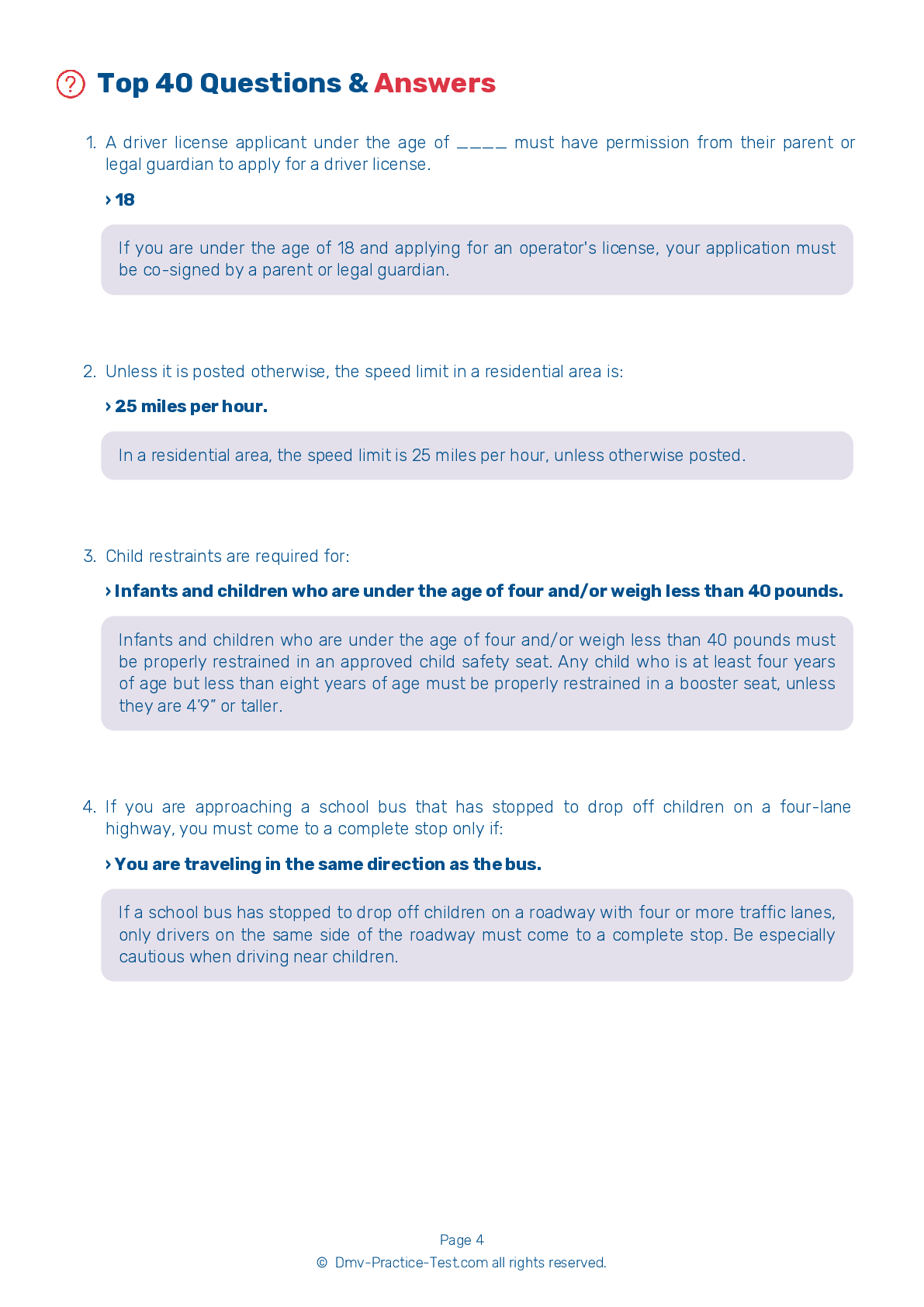FREE Ohio DMV Practice Test #1 Page 5 of 5
The practise exams for Ohio's DMV have been revised for January 2025. It comprises questions based on the most important traffic signals and laws for 2025 from the Ohio Driver Handbook. To study for the DMV driving permit test and driver's licence exam, use actual questions that are very similar (often identical!) to the DMV driving permit test and driver's licence exam.
Each question on the practise exam has a tip and explanation to help you recall the ideas. Questions about traffic rules, traffic signs, and driving statutes, as well as knowledge from the Driver Handbook, will be included in the written portion of the official Ohio DMV test.
You must properly answer 35 of the 40 questions to receive a passing mark. To help you prepare for your instruction permit or driver's licence, take this practise test from the Ohio Department of Motor Vehicles.
The DMV exam is offered in a variety of languages.
Using any form of testing help will result in an automatic fail, and the DMV may take further action against your driver's licence, so avoid it.
33 . Regulatory signs are usually ____ and should always be obeyed.
Regulatory signs regulate the movement of traffic. They are usually white with black markings and must always be obeyed by motorists.
34 . The consumption of alcohol while taking drugs can:
The combination of alcohol and drugs, in some cases, can increase the effects of both the drugs and alcohol. It can be unsafe to drive after consuming either alcohol or drugs and is even more dangerous after combining them.
35 . This road sign means:

An eight-sided sign always means "stop." You must come to a complete stop and wait for any vehicles or pedestrians to clear the way before proceeding.
36 . This road sign means:

This signs warns that a four-way intersection is ahead.
37 . This road sign means:

This sign indicates that the road ahead curves to the right and then to the left. You should slow down to be able to negotiate these curves safely.
38 . When you hear a fire engine siren behind you, you must:
When you hear the siren of an emergency vehicle, you must pull over to the curb or side of the road and stop.
39 . This road sign means:

This sign indicates that the overpass ahead has a low clearance. You should not proceed if your vehicle is taller than the height shown on the sign (in this case, 13 feet 6 inches).
40 . A driver license applicant under the age of ____ must have permission from their parent or legal guardian to apply for a driver license.
If you are under the age of 18 and applying for an operator's license, your application must be co-signed by a parent or legal guardian.
See the exact questions that will be on the 2025 Ohio DMV exam.
99.2% of people who use the cheat sheet pass the FIRST TIME
LT gives us an insight on how the cheat sheet provided her with all the study questions she needed before taking her test.
Joe initially studied with the handbook and failed his test, he eventually found us online, studied and pass his test the first time around.



